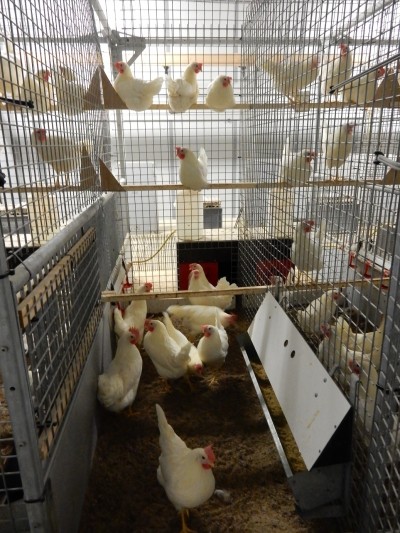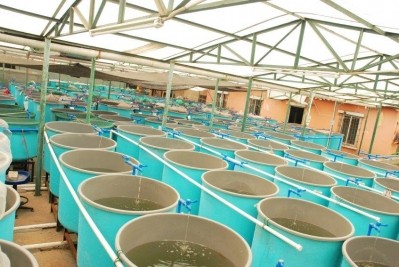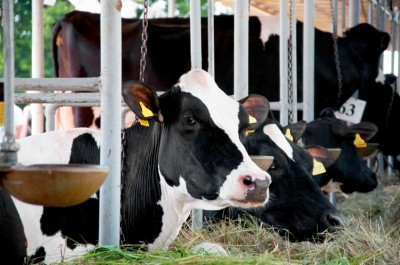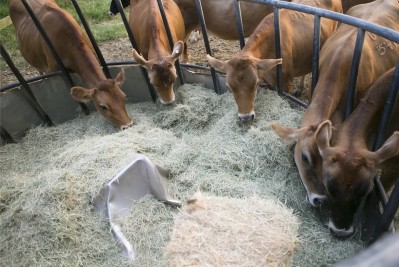EU: Alfalfa silage could work as local organic feed for layers
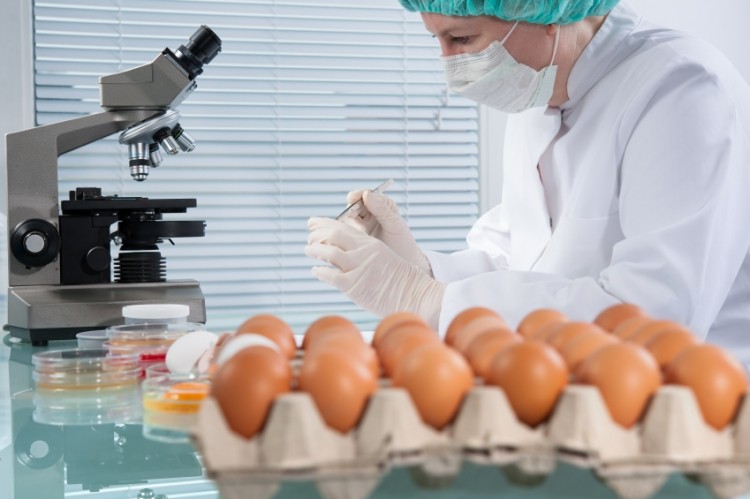
Eggs from hens fed with silage contained a high proportion of omega n-3 fatty acids, wrote the team, led by animal nutrition scientists, Salomé Carrasco and colleagues, from the Department of Agriculture and Food Economy at the University of Applied Sciences Weihenstephan-Triesdorf in Freising.
They concluded the incorporation of alfalfa silage in the diet of organic laying hens has a similar effect on egg quality as compared to birds fed alfalfa meal or pastured hens.
But the deposition of carotenoids in the yolks depends on the availability of lipids in the diet, said the team.
“In the formulation of diets with the inclusion of alfalfa silage for laying hens raised in this kind of system, an adequate level of fat is necessary to achieve the optimal incorporation of carotenoids in the yolks,” noted the authors in the write up of their research in the journal, Animal Feed Science and Technology.
The study was undertaken as part of the CORE Organic II project aimed at ensuring availability of locally sourced, nutritionally adequate, organic feedstuffs for pigs and poultry to support 100% organic feed supply by the end of the EU derogation period, December 2017.
The research was also backed by a German federal program supporting sustainable agriculture (BÖLN).
Benefits of alfalfa
The researchers said including alfalfa in the diets of laying hens is a viable practice because it contains high quality ingredients such as omega-3 fatty acids, pigments, vitamins, minerals and saponins.
Furthermore, noted the German team, roughage in the diets of poultry has been recognized to improve the birds’ natural feeding behaviours, such as foraging, scratching and pecking and to support healthy conditions for broiler and laying hens.
While earlier studies showed no significant effects on laying and growth performance from the inclusion of chopped, extruded and pelleted alfalfa silage in the diets of laying hens, the nutritional quality of processed alfalfa does vary and trials have shown the application of thermal treatments to produce alfalfa meal decreases the content of carotenoids (Boileau and Erdman, 2004 and Fonseca et al., 2008), said the team.
In an earlier trial by the researchers, high temperatures, high screw speed and mechanical pressure in presence of oxygen were applied to extrude and pelletize the alfalfa which, they noted, could alter the extensive oxidative degradation of both carotenoids and polyunsaturated fatty acids in the resulting silage.
“Consequently, the attributes of this new silage could affect the quality of the eggs. Therefore, the present study was aimed at evaluating the impact of these types of silage on the fatty acid profile, the cholesterol content and the color of egg yolks.”
The study
The authors said 440 hens, divided into four groups, were used in the study.
The control group (A) received a complete feed mixture (CFM), while the silage groups (B, C and D) received a supplementary feed mixture (SFM).
The SFM recipe was formulated based on an assumed ingestion of 20% silage in the diet. To achieve the energy requirements of the silage groups, canola oil was incorporated in the SFM, said the team.
Before ensiling, the alfalfa was chopped for group B and additionally extruded for group C. One half of the extruded silage was pelleted together with the SFM to conform the pelletized silage for group D, added the researchers.
Results
The study showed a mixed effect of silage and the feed mixtures on the parameters measured.
Eggs from hens fed with silage (B, C and D) contained 2.4 times more n-3 fatty acids (FA) than the control (A). Chopped, extruded and pelleted silage showed the same effect on the quality of eggs, but thermally treated silage (C and D) produced yolks with higher concentrations of SFA, said the researchers.
They said the yolks from D exhibited the highest content of odd-numbered fatty acids (15:0, 17:0, 17:1), corresponding to the highest intake of silage.
Groups B and C with high canola oil intake showed the highest 18:1 n-9, 22:5 n-3 and monounsaturated fatty acids (MUFA). Furthermore, the team found that, in spite of the high fat intake, their cholesterol levels were similar to A due to the anti-cholesterolemic effect of the alfalfa silage.
Hens from group D consumed the lowest amount of fat but the highest amount of silage, which corresponded to the lowest level of cholesterol, said the researchers. The fat consumed in the diet was essential in the absorption of carotenoids from the consumed silage, they noted.
Thus, yolks from the silage groups showed decreasing values for the intensity of red (B: 7.5; C: 6.9; D: 5.2) and yellow (B: 38.6; C: 36.8; D: 32.9) colour as the intake in terms of the amount of fat/silage decreased (B: 6.8; C: 5.0; D: 2.8 fat/10 g silage).
“The deposition of carotenoids in the yolks depends on the availability of lipids in the diet. Thus, group D consumed the lowest quantity of lipids and exhibited the lowest values for red and yellow colour intensity.
“Group D consumed the lowest quantity of lipids and exhibited the lowest values for red and yellow colour intensity. The colour of yolks from B was darker, with a greater intensity of yellow and red than those from the control.
Source: Animal Feed Science and Technology
Title: The effect of chopped, extruded and pelleted alfalfa silage on the egg quality of organic laying hens
Published online ahead of print: doi:10.1016/j.anifeedsci.2016.06.001
Authors: J. Wüstholz, S Carrasco, G Bellof
